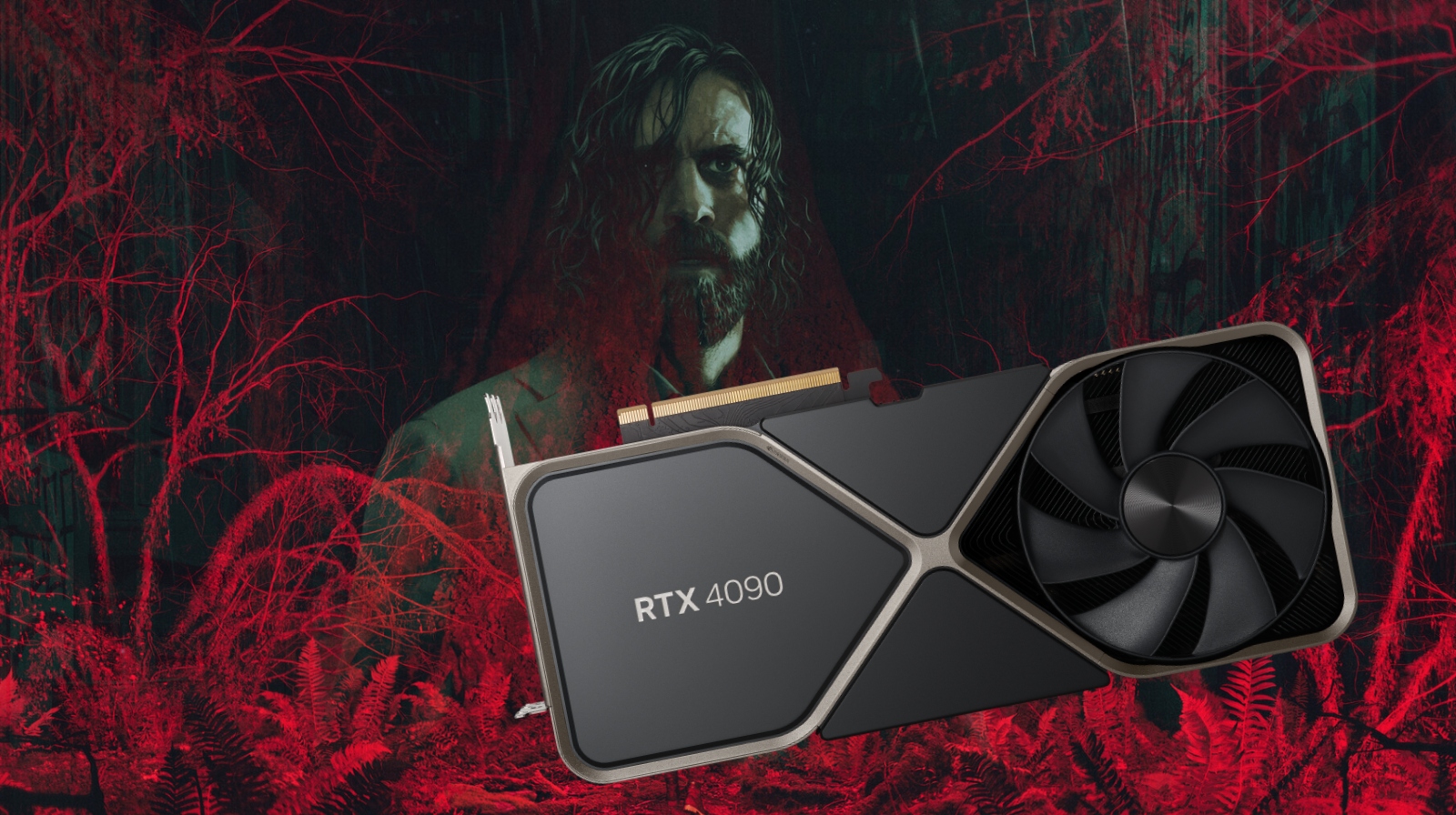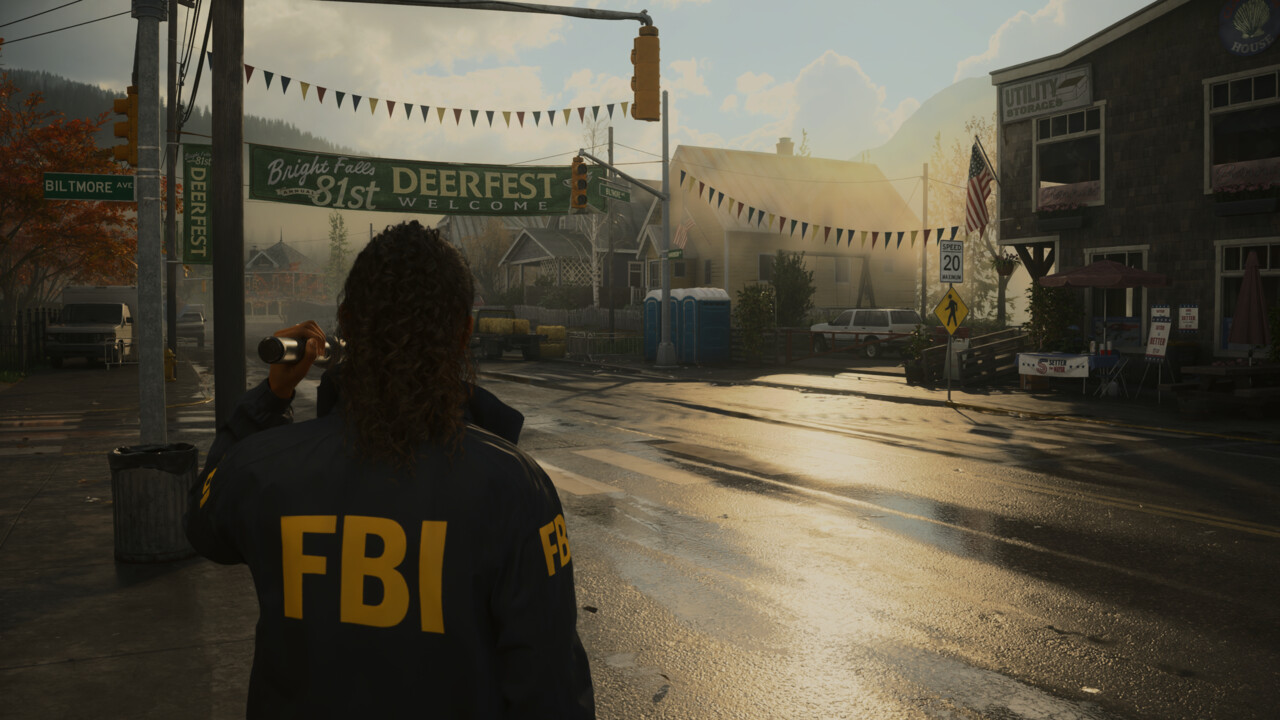-
Dragi članovi, prochitajte OVU vest u vezi nove teme!
-
 Molimo vas sve da pročitate PRAVILA FORUMA i da se istih pridržavate.
Molimo vas sve da pročitate PRAVILA FORUMA i da se istih pridržavate. -
Secret Level Discord server je LIVE! Za više informacija kliknite OVDE
You are using an out of date browser. It may not display this or other websites correctly.
You should upgrade or use an alternative browser.
You should upgrade or use an alternative browser.
TwiSteR
PCMR
Razumem šta si napisao, ali zašto da gube vreme na takve stvari kad lepo mogu da "optimizuju" igru smanjivanjem detalja i korišćenjem dinamičkog skaliranja rezolucije. A ko želi da je igra u fulu, nek' lepo kupi komp od 3k evra i uživa ko čo'ek.Nismo se razumeli. Ako low optimizacija zahteva PS5 hardware, onda to znaci da developeri ne znaju/ne zele da optimizuju tu igru.

- Messages
- 2,783
- Reaction score
- 5,186
- Points
- 513
Nismo se razumeli. Ako low optimizacija zahteva PS5 hardware, onda to znaci da developeri ne znaju/ne zele da optimizuju tu igru.
Otkud znaš da igra na konzoli neće izgledati kao low na PC-ju?

- Messages
- 8,576
- Reaction score
- 12,495
- Points
- 503
Ako je igra zahtevna, ne znaci da nije optimizovana.Drugim recima, ne znamo da optimizujemo nase video igre.
Optimizacija ne znaci da igra mora da radi na RX480. Optimizacija je dobro iskoriscenje hardvera kojeg su developeri odabrali da na njemu igra radi. U ovom slucaju odabrali su noviji hardver.
Mnogi developeri ce uskoro da prave igre samo uz Lumen i slicne RT GI sisteme, a za taj pristup jedini nacin da se igra pripremi za stariji i sporiji hardver je da se ulozi dosta para i vremena za lightprobes i druga stara resenja za osvetljenje. Retko ko ce se cimati oko toga, jednostavno ce traziti da igraci imaju noviji hardver.
To je normalan tok PC gaminga. Spidey2 ima samo RT GI bez ikakvog drugog resenja za osvetljenje, sto znaci da ce i PC port kada stigne za par godina verovatno zahtevati RT hardver. Nece moci da se igra na tosteru.
- Messages
- 8,576
- Reaction score
- 12,495
- Points
- 503
Alan Wake 2 opisi stizu prekosutra popodne.
Bas me interesuje kako ce prodaja ici, franshiza je uvek bila klimava ali nasla je malo publike koji su gurali keca u "kultni status".
Razvoj prve igre je bio uzas:
Nekoliko godina odlaganja [uz prodaju Max Payne IP-a da bi se spasili bankrota], pretumbavanje igre iz open world u linearni action/horor.
Premijera prve igre samo na jednoj platformi, uz dugacka cekanje za PC i PlayStation.
Neuspesna ekspanzija.
Neuspesan "remaster".
Dvojka isto ima potencijalne probleme:
Nastavak na igru koju je malo ko igrao.
PC izdanje ograniceno na Epic Games Store.
Visok PC system requirements.
Konzolna izdanja stizu bez fizickih diskova, digital only.
Izlazak u periodu oko mnogo drugih hit igara.
Videcemo kako ce ispasti... Promocije su bile super, a premijera je u petak.
Bas me interesuje kako ce prodaja ici, franshiza je uvek bila klimava ali nasla je malo publike koji su gurali keca u "kultni status".
Razvoj prve igre je bio uzas:
Nekoliko godina odlaganja [uz prodaju Max Payne IP-a da bi se spasili bankrota], pretumbavanje igre iz open world u linearni action/horor.
Premijera prve igre samo na jednoj platformi, uz dugacka cekanje za PC i PlayStation.
Neuspesna ekspanzija.
Neuspesan "remaster".
Dvojka isto ima potencijalne probleme:
Nastavak na igru koju je malo ko igrao.
PC izdanje ograniceno na Epic Games Store.
Visok PC system requirements.
Konzolna izdanja stizu bez fizickih diskova, digital only.
Izlazak u periodu oko mnogo drugih hit igara.
Videcemo kako ce ispasti... Promocije su bile super, a premijera je u petak.
Sto se mene tice posto planiram da igram PC verziju bice to torent ovaj put, pare ce dobiti kao i za Control godinu dana kasnije kada i ako izadje Steam verzija.PC izdanje ograniceno na Epic Games Store.
- Messages
- 8,576
- Reaction score
- 12,495
- Points
- 503
Alan Wake 2 je finansirao Epic (niko drugi nije hteo da da tolke pare), oni su i publisher. Tesko da ce ikada stici na Steam.Sto se mene tice posto planiram da igram PC verziju bice to torent ovaj put, pare ce dobiti kao i za Control godinu dana kasnije kada i ako izadje Steam verzija.
Sent from my OnePlus 8T using Tapatalk
Super srecno sa 10k prodatih kopijaAlan Wake 2 je finansirao Epic (niko drugi nije hteo da da tolke pare), oni su i publisher. Tesko da ce ikada stici na Steam.
Sent from my OnePlus 8T using Tapatalk

TwiSteR
PCMR

Nvidia reveals official Alan Wake 2 benchmarks but it’ll still be brutal on older GPUs - Dexerto
Nvidia has revealed several performance benchmarks for Alan Wake 2 on PC, and you might wince.
- Messages
- 8,576
- Reaction score
- 12,495
- Points
- 503
Ispravka, Spidey2 ima RT refleksije. Radice PC verzija na tosteru.To je normalan tok PC gaminga. Spidey2 ima samo RT GI bez ikakvog drugog resenja za osvetljenje, sto znaci da ce i PC port kada stigne za par godina verovatno zahtevati RT hardver. Nece moci da se igra na tosteru.

Ali ostatak price vazi, tehnologija napreduje, dev timovi ce koristiti sve nacine da sebi olaksaju posao i da igre izgledaju blize ili bolje od konkurencije.
- Messages
- 8,576
- Reaction score
- 12,495
- Points
- 503
User sa Ere kaze da je video kako AW2 radi na PC-u kod drugara koji pise recenziju:
Performance on the RTX 3080 is pretty good at least. I've been watching a friend that's reviewing it play it. We fiddled around with the settings a bit, and without RT we're hitting a solid 80+ FPS at 1440p in DLSS Quality mode maxed out (depends on the area, can be 100+ FPS indoors, but forest areas are around 70 FPS). We also tried the path tracing, it ran at 50 FPS in DLSS Performance mode at the highest settings with ray reconstruction, but it dipped below that in the heavier forest areas, more around 30-40 FPS but still ok. I'm actually a bit surprised the official system specs are being that pessimistic... maybe it's just to be on the safe side?
It looks gorgeous in all graphics presets we tried. Probably the best looking game I've seen so far. Main cutbacks in the lower settings seem to be how much stuff is on screen (e.g. bushes, LODs and terrain) but hard to tell. Reflections look a bit worse and shadows are a bit worse quality. Try to keep the fog on high because that looks amazing. no Denuvo afaik but don't know for sure.
Postovi EPIC vs ostali prebaceni u adekvatnu temu.
Bojan
Well-known member

Alan Wake 2: Nvidias Benchmarks vs. erste Eindrücke der Redaktion
Am 27. Oktober erscheint Alan Wake 2. Jetzt liefert Nvidia erste Benchmarks mit maximierter Grafik und vollem DLSS-Featureset.
- The title looks impressive in places using path tracing, but cannot maintain this level throughout. Nevertheless, Alan Wake II is another game with a very high level of graphical presentation. However, this costs a lot of performance – even more than was recently assumed.
- The benchmark results published by Nvidia a day ago appear to be absolute best-case scenarios. The editorial team almost never came across the 103.9 FPS mentioned for a GeForce RTX 4080 for the setting "Raytracing High" (maximum path tracing) in UHD including DLSS 3.5 performance, frame generation and Ray Reconstruction in the first two hours of the story. As a rule, the title runs at 70 to 80 FPS when played with these settings, but there are also scenes in which the FPS is only around 60.
- Frame generation is a must for path tracing (and often for "normal" ray tracing). The artificial intermediate images can be graphically convincing, but have a significant impact on the input lag. Because frame generation as a means to an end for using ray tracing in Alan Wake - depending on the resolution and GPU - also has to be used at a render frame rate (already including upscaling) of just 30 FPS, this is also noticeable. Despite the displayed 60 FPS, the game is stuck. But obviously it doesn't work any other way with ray and path tracing.
- DLSS/FSR are always active, which explains their consistent mention in the official system requirements. With Nvidia DLAA and AMD FSR Native, there is also the option of using both algorithms at the native resolution (i.e. without upscaling) and thus for edge smoothing. Neither technology can be switched off.
- Not only the use of "path tracing", i.e. the complete implementation of the lighting through ray tracing, but also the activation of ray tracing in general is currently not recommended on AMD Radeon RX, the FPS drops drastically. Or to put it even more drastically: RT is currently virtually impossible on a Radeon - even on a Radeon RX 7900 XTX. The 60 FPS mark is often not reached with AMD's flagship, even in Full HD with FSR Balanced.

